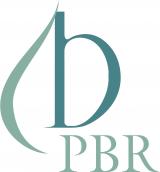Background and aim
Observations of farmer paddocks over many years suggest that seed germination is reduced when mature lupin seed in the pod is exposed to rain prior to harvest. However, there is no empirical data to support this. In 2015 the variety PBA Jurien was released with reports of poor establishment of the seed. The seed crops received over an inch of rain while standing mature in the paddock prior to harvest which, if previous observations are correct may explain the poor germination of the seed. A set of trials was run to test the hypothesis that seed from lupin plants which have received moisture at crop maturity, but prior to harvest, have reduced germination. The aim of this trial series was to investigate whether wetting and drying of mature lupin seed reduced seed germination.
Trial details
There were three separate trials conducted.
Three varieties were used in all the trials: PBA Jurien, Mandelup and Gungurru.
Each trial used different methods to wet and dry lupin seed in the pod. After these treatments were applied seed was hand threshed from pods to ensure no mechanical damage and germination tested as per ISTA (International Seed Testing Association) rules for lupin.
Trial 1 was a field trial, single row 1 metre plots. At maturity overhead irrigation was applied to simulate rainfall. There were four irrigation treatments (control no irrigation, one irrigation, two irrigations, three irrigations). Dates of harvest were 31 October (no irrigation), 14 November (one irrigation), 28 November (two irrigations) and 15 December (three irrigations).
Trial 2 was a field trial investigating the effect of delayed harvest without irrigation applied.
This trial was located adjacent to Trial 1 and managed in the same way except that irrigation was not applied and the plants were left exposed to the weather. There was 6.6mm of rain over the period that plants were left mature in the paddock (Table 1).
| Harvest date | Rain after plant maturity (mm) |
|---|---|
| 31/10/2016 | 0.0 |
| 14/11/2016 | 1.4 |
| 28/11/2016 | 4.6 |
| 15/12/2016 | 6.6 |
Trial 3 was in a laboratory where whole pods were wet and placed in an incubator. As with Trial 1 there were four treatments; control (no wetting of pods) ; one wetting and drying cycle (48 hours at 30°C); two wetting and drying cycles (96 hours at 30°C) and three wetting and drying cycles (144 hours at 30°C). For the wetting and drying procedure a wire rack was placed in each of three 35x15cm trays (one for each variety). These pods were then thoroughly wet with 400mL of water using a pressure sprayer to ensure 100% coverage. The excess water drained to the 35x15cm tray below the wire racks and was left in the trays. Trays were then placed in an incubation cabinet set to 30°C. After this period they were removed and dried down naturally in a 20°C room.
Results
Trial 1
For all varieties irrigation applied to the mature plant prior to harvest resulted in seed with lower germination. Averaged across varieties, when the pods were wet and dried once the germination of the seed was reduced by 4%; with two drying cycles germination dropped a further 15% and with three a further 26%. Hence seed germination was reduced by 43% when the pods went through three wetting/drying cycles and were harvested on December 15. There was no significant difference between the varieties used.
Trial 2
Conditions after plant maturity were relatively dry compared to the irrigation treatments in Trial 1, hence the plants that were left in the open were subject to different conditions than the irrigated treatments. The germination percentage of the seed did drop when harvest was delayed from 31 October to 15 December by 7%, after exposure to 6.6mm of rain. This was not statistically significant and was much lower than the 43% germination reduction in the irrigated treatments alongside.
Trial 3
Exposing mature seed in the seed pod to moisture decreased germination percentage. Averaged across varieties when the pods were wet and dried once germination of the seed was reduced by 6%, with two drying cycles germination dropped a further 5% and with three, a further 24%. In total germination was reduced by 37% when the pods went through three wetting/drying cycles. The germination percentage of all varieties declined substantially due to wetting and drying of the seed. There was a variety by incubation day interaction that was significant. There was no difference in the germination percentage of varieties at zero, two and four days of incubation. At six days each variety had a significantly different germination percentage; Mandelup; 74%, Gungurru; 62% and PBA Jurien; the lowest at 46% (Table 5).
Conclusions
This set of trials confirm the hypothesis that seed from lupin plants which have received moisture at crop maturity, but prior to harvest, have reduced germination.
In these experiments exposure of seed to one wetting and drying cycle reduced seed germination by 5-10%; two cycles by 10-20% and three cycles by 35-45% (Figure 1). It should be noted that these reductions in germination percentage occurred in ideal laboratory germination conditions and it is likely that any reduction in lupin seed quality would have a larger effect on field establishment, particularly if field conditions are poor.
The key message is that lupins which are going to be used for seed the next year should be harvested as soon as they are mature.
Acknowledgements
Plant Breeders Rights logo (above) denotes PBA Jurien is protected under the Plant Breeders Rights Act 1994.
GRDC project number: DAW00227. Trial number 17GE57.

